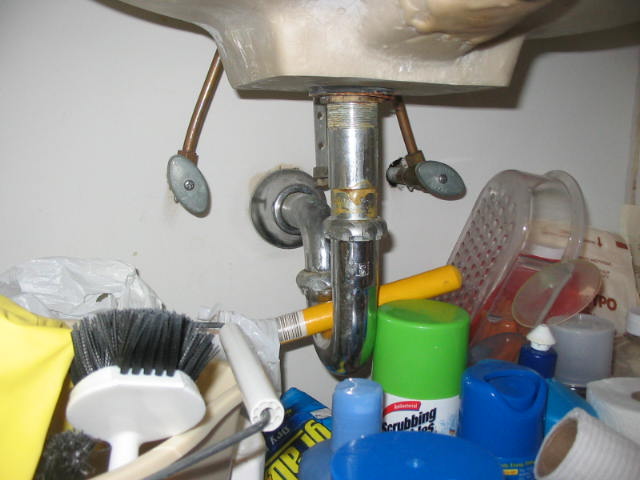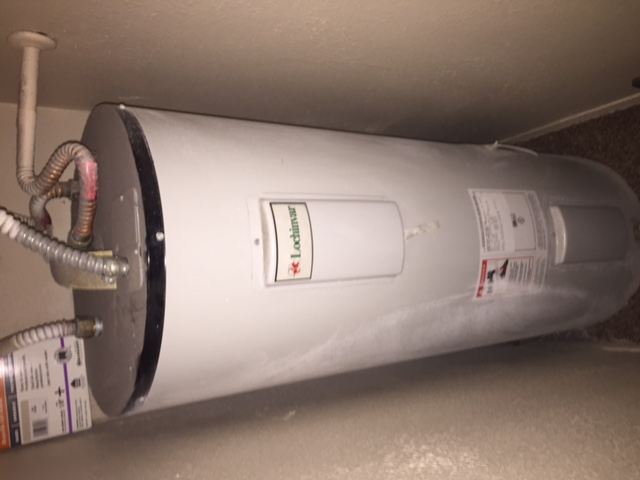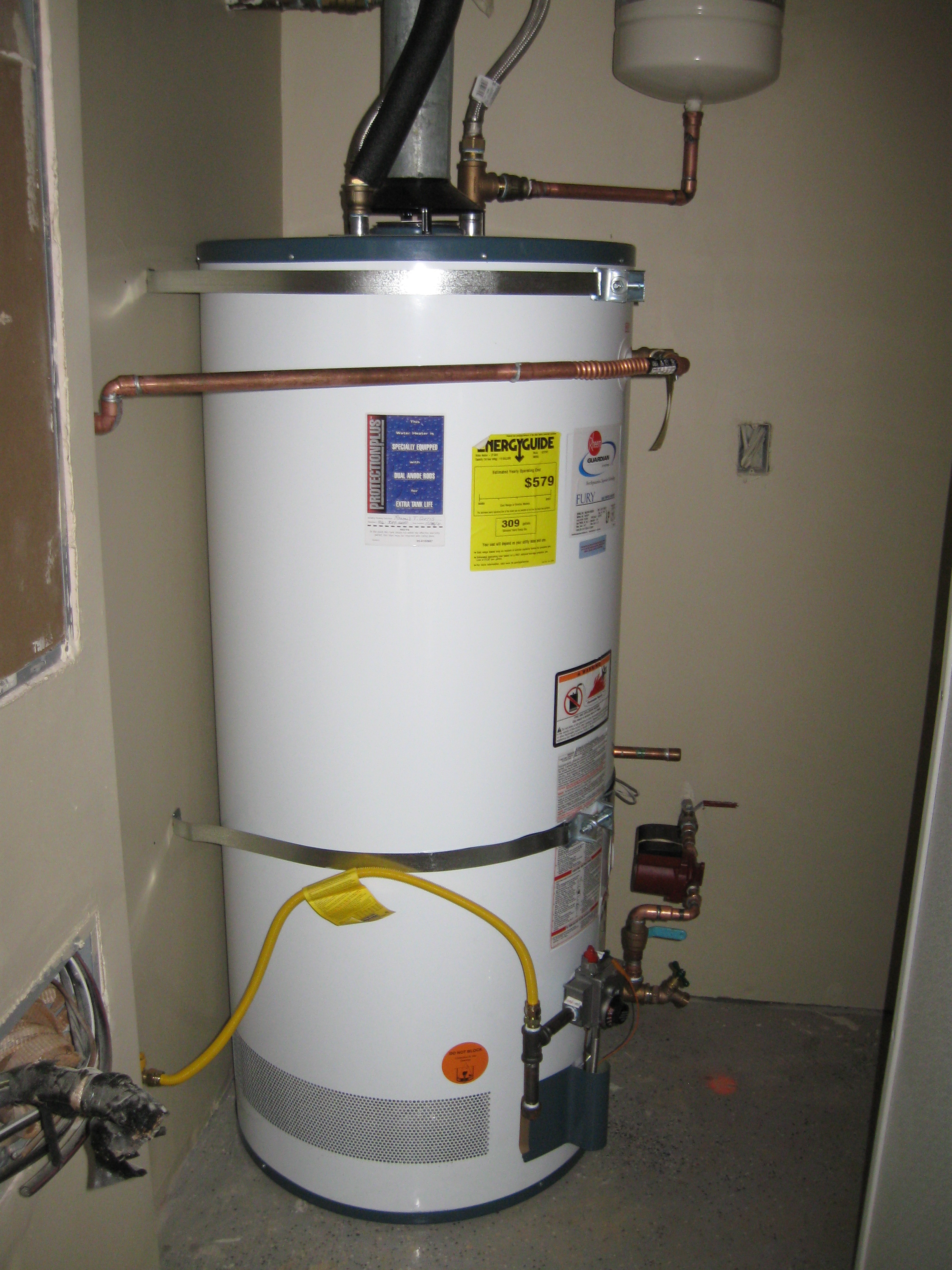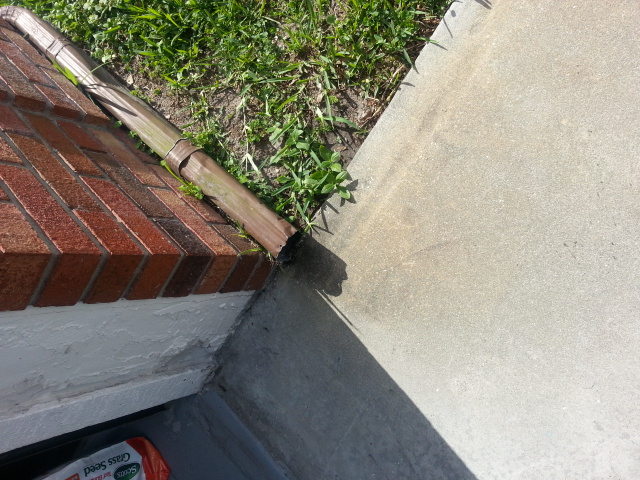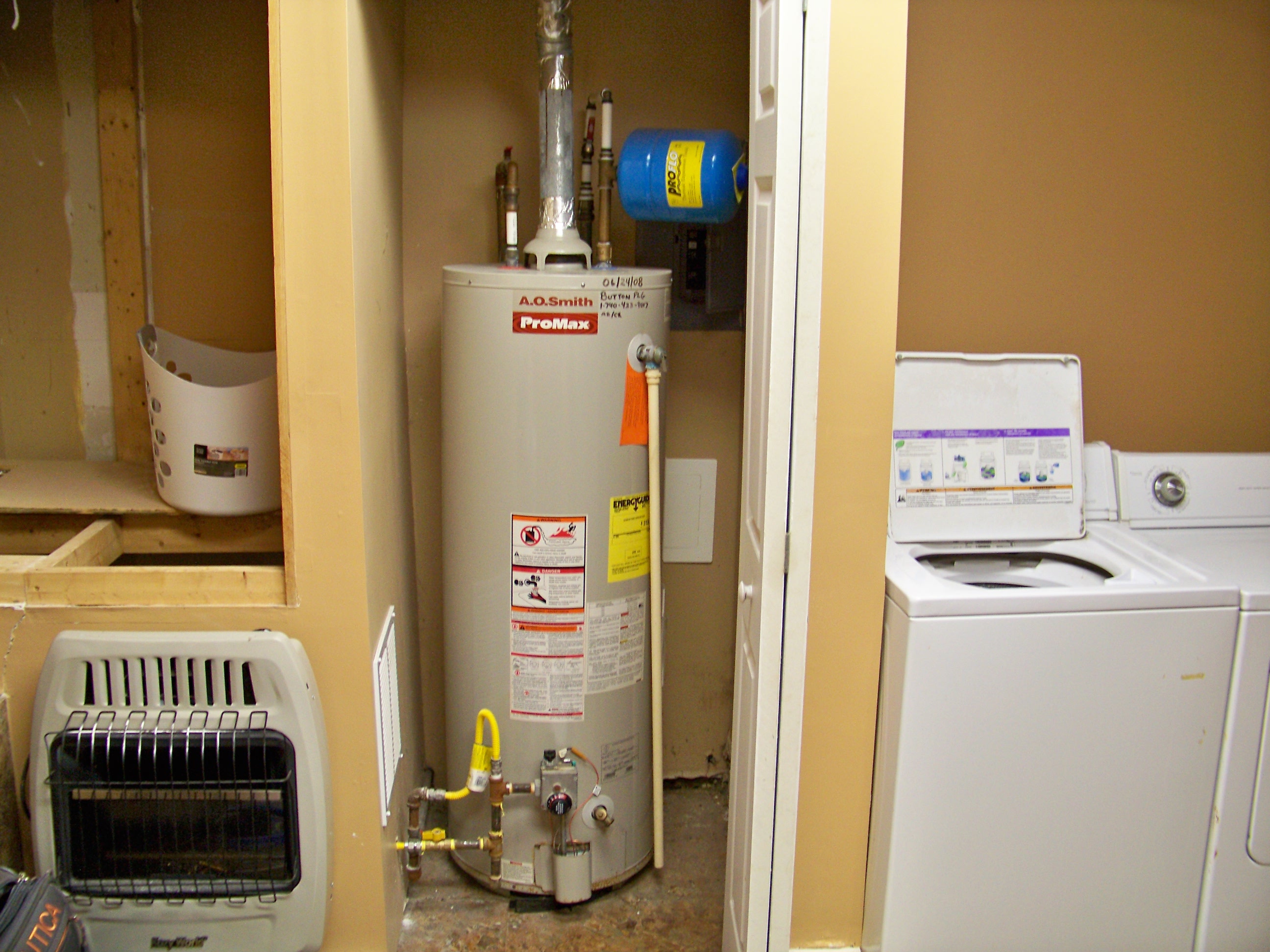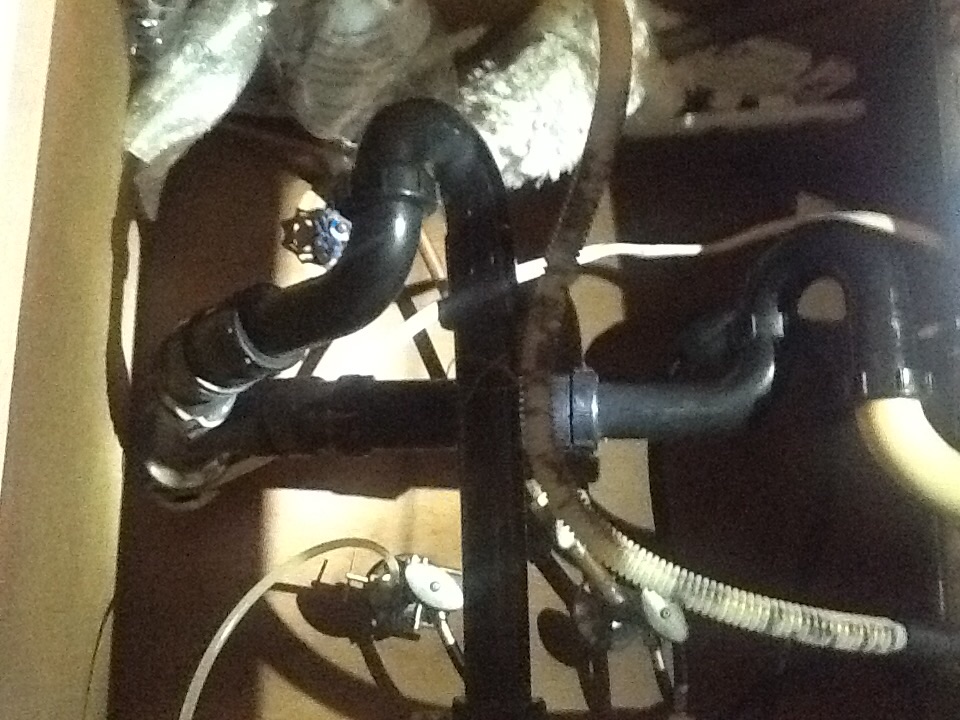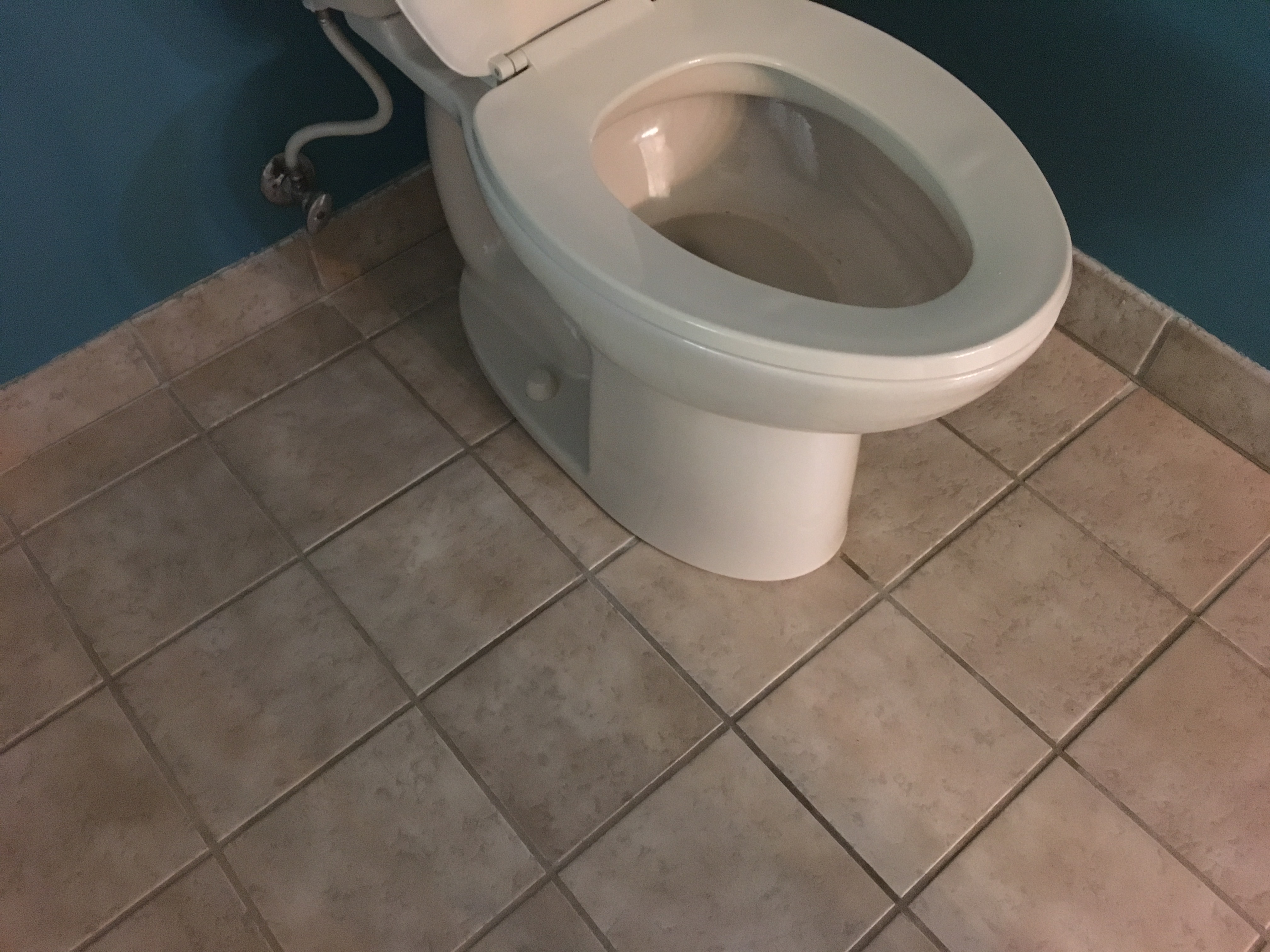I studied an image of a P-Trap. While I already know that a P-Trap is the correct trap to have under a fixture(lavatory for example), I took my time with the image to commit some of the finer measurements to memory. These include(but are not limited to) no more than 24’ between the trap’s water line and the top of the tail piece, no more than 30’ from the down stream side of the trap(know as the weir) to the drain pipe and a measurement of 2’ to 4’ of water in the liquid seal portion of the trap. It is important to know all of these details by memory given the potential number of P-Traps in a given home.
P trap under a bathroom sink. Tailpipe is of acceptable length. The location of the trap is within acceptable distance both vertically and horizontally. Flexible supply lines are supplying hot to left and cold to the right. No evidence of active leak at the time of the inspection.
Gas appliance connection. Connection must not be concealed. Connectors cannot go through walls ceilings or floors. Shutoff valve cannot be in a different room and should be easily accessible and visible. Connectors cannot be longer than 36 inches except for ranges and cloths dryer. They can be 6ft.
good post
mobdro for pc
download mobdro
mobdro on firestick
http://www.bigoliveforpcfreedownload.com/
http://www.bigoliveforpcfreedownload.com/
http://www.bigoliveforpcfreedownload.com/
http://www.mobdroforpcfreedownload.com/
http://www.mobdroforpcfreedownload.com/
http://www.mobdroforpcfreedownload.com/
http://www.mxplayerforpcfreedownload.com/
http://www.mxplayerforpcfreedownload.com/
http://www.mxplayerforpcfreedownload.com/
https://mobdroforpcfreedownload.wordpress.com/
https://mobdroforpcfreedownload.wordpress.com/
https://mobdroforpcfreedownload.wordpress.com/
thanks admin
This electric water heater is functioning properly. No leaks or corrosion Observed. It is located in the hallway storage closet. This isn’t ideal but necessary due to the limited space available in this condominium. The TPR valve drain pipe is not sloped down for proper drainage. The drain pipe is routed through the wall and no visual inspection of the termination point is possible. I recommend further inspection by a certified plumber.
This is a good picture of the hot water heater meeting code in areas where earthquakes are an issue. As you can see from the photo, it is strapped at the top and at least 4" above the controls. This would meet code in areas that require this.
I learned the importance of grading the immediate area around a house to prevent rain water, drain water, etc. from running up against a houses foundation and causing possible issues with the foundation in the future do to heaving and other water related issues.
Dryer vents.
The vent for the dryer should no be longer than 25’in a straight run. For every 45 degree in turn there should be a 2 1/2’ deduction. The vent should be to the outside of the building. By venting it in the crawlspace, shown on the picture, will keep all the moisture inside the building envelope. This will cause damage to the structure over time. High humidity in a crawl space will cause the wood to rot and compromise the floor structure. Mould will develop in warm and humid environments and could be a health concern.
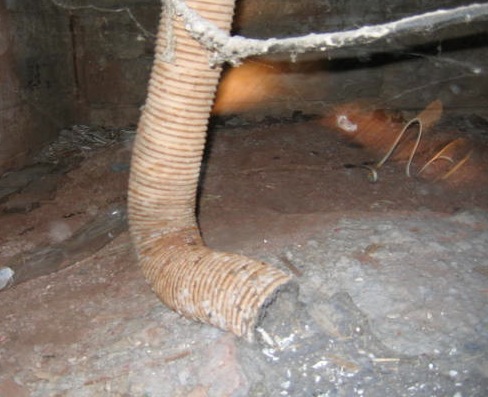
Gutters and downspout, or other means, should prevent from washing soil away fro the dwelling’s foundation or building up around and increasing ground water pressure on basement walls. The size of a drainage pipe should not be reduced in the direction of flow.
Storm drainage is the system of collecting and transporting away from a dwelling the rainwater, groundwater, and storm water typically associated with rainfall. Connection of floor drains to the storm drain age system is not permitted. Storm, rain and ground water should not be drained into a sewer system.
This picture shows the water heater component of the plumbing system. You can see the fuel supply with a t-trap, as described in the fuel section of this course, and that’s the recommended type of trap for the fuel system of a gas fueled appliance. You’ll notice that the trap is properly located downstream of the shut off valve as required.
Just read an article on PVC and discovered that it was accidentally discovered in the 19th century and its first use was for electrical wiring. In the U.S. PVC is currently used for about 66% of water distribution and 75% of sewage pipes. Although its
Here is a picture of the pluming under a kitchen sink, you can see two P type traps working from the sink and from the garbage disposal. The concern would be the build up of waste in the discharge line coming from the dish washer.
I read the article on pricing for new home inspectors. The market value will have a lot to say about what I will be able to charge once I’m certified and able to start working. To break into the market I’ve thought about offering a six month discount to the market price or a similar discount to agents for the first time they use my service.
This is a gas fueled hot water heater the vent should be reinstalled and tested for the correct venting. I would advise flex piping on both inlet and outlet lines. A valve should be installed on the inlet line. I would advise an expansion tank be in stalled.
One or more of the toilets was found to be loose and required further attention to prevent possible future moisture damage. When the toilet is loose, the wax ring can compress and fail. Recommend having a plumber review and repair.
The home was equipped with a private on-site wastewater disposal system, commonly called a septic system, the inspection of which lies beyond the scope of the General Home Inspection.
Although I may make some basic observations concerning this system, you should understand that evaluation of the septic system requires a specialist inspection and if you choose to not to have that inspection performed, you may do so at significant risk.
A septic system can be one of the most expensive home systems to replace. Diagnosing problems can be difficult because most system components are hidden underground and problems may be apparent only under certain conditions. The Inspector recommends having all septic systems inspected at the time the property is sold, but inspection is especially important in homes older than 10 years, homes which have been significantly expanded or homes with symptoms which indicate problems. Inspectors should be able to provide proof of formal qualifications such as successful completion of an accredited training course or one which has been approved by a credible authority.
Sump pumps are made to remove rising ground water from the home. The pump should be installed in a sump pit 24" deep and 18" wide. There are two types of pumps the pedestal type and the submersible pump. Water is pumped out from the bottom of the pit, therefore the pit should have a solid bottom to prevent dirt and gravel entering the pump and cause damage. The discharge line should have a check valve to prevent water flowing back in to the pit. This would cause the pump to cycle more than it is necessary. The discharge line needs to be 20’ away from the building. This way the water will not drain back in the home. Regular maintenance check is required and cleaning the pit from debris.
How many feet from a residential dwelling should a natural gas fire pit be installed? Is there a minimum distance required?
Josh Grant
Southern Charm Home Inspections, LLC
(843) 900-1418
4202 Spring Lake Way
Goose Creek, SC 2944
southerncharminspections@gmail.com
Upon inspection of the master bathroom sink water marks and surface rust where present indicating a leak. Further examination showed the rubber gasket had recently been replaced and surface rust was from and old leak. Pipes and seals are all in tack and in good working condition. No repair was suggested.
